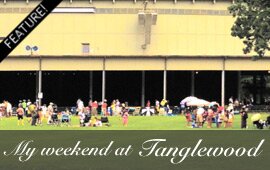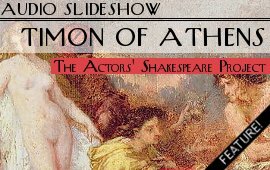
With characters based on German Expressionists Max Beckmann and Franz Marc, Marie Curie, and Dada artist Hannah Höch , at the American Repertory Theater through January 8th, is certainly not a musical that strikes up an immediate familiarity with most audiences, like I imagine Spider-Man: Turn Off the Dark might. But this somewhat arcane source material is only a starting point on which to build a more conventional narrative, familiar to musicals and with little grounding in the biographies of these historical inspirations. One about friendship, love, unrequited love, and loss. Artists Max and Franz go to Paris, they both fall for the party girl chemist Maria, Maria chooses Franz, Franz dies in WWI, where Max plays it safe as a medic and correspondent and survives to enjoy Dada at its height with his new love interest Hannah, before eventually escaping to America alone to avoid any serious trouble with the Nazis–much to the chagrin of Harvard academics! Well, you don’t need Wikipedia to tell you Marie Curie didn’t date artists.
As much as it employs conventional plotting, The Blue Flower is very much outside-of-the-box. Beverly couple and musical novices Jim and Ruth Bauer have created something that revels in its moments of obscurity. Even the production credits page in the program has been translated into something dubbed Maxperanto, a gibberish language spoken by Max. The show moves quickly, darting through the history and art movements between the years 1889 and 1955, without leaving us much time to catch up and reckon with these characters or the depictions of the two great wars and their tragedies. The numbers are densely packed together, leaving characters practically no lines beyond their lyrics to develop themselves with. The Blue Flower‘s double dips into musical theater’s conventions are the only times one has to get one’s bearings.

Conner Christiansen (Typewriter Man), Meghan McGeary (Hannah), and Teal Wicks (Maria) (Marcus Stern)
Our narrator Fairytale Man, played with extraordinary finesse and style by Tom Nelis, does us due diligence by filling us in on our character’s childhoods and backstories with the aid of projections, in an aesthetic similar to that of Jules and Jim, or more recently, 500 Days of Summer, we don’t ever really know who these people are or how they match up to their historical namesakes. But then, perhaps they’re meant to seem like the flat, densely-packed portraits torn from magazines in one of Hannah Höch’s collages, even if The Blue Flower’s Hannah doesn’t make collages. Only Max practices the medium, assembling something like an artists scrapbook of his life–friends and loves lost to the wars and chaos they caused–on a New York City park bench in 1955, in a kind of epilogue and prologue combined.
Marsha Ginsberg’s adaptable and lavishly battered set of a cabaret, with it’s period paintings and peeling plaster, starts with stacked chairs and tables that costumed stagehands position in the minutes before curtain, and soon becomes a WWI battlefield, then one of those rooms Nazis ask people questions in. An additional doorway has been installed just inside the Loeb’s main doors, giving audiences the immersive feeling of entering a cabaret. Walking in, I couldn’t help but wonder, “Where the hell is Amanda Palmer?” She wasn’t there. But Meghan McGeary was, playing Hannah, an avant garde Dada performance artist with eyes for Max. McGeary’s been playing Hannah since the show’s initial (and from what I’ve read, inferior) New York productions in 2004 and 2008, and she shows it, with a huge, expressive voice. Palmer may have the living puppet thing down better, but McGeary delivers some outstanding solo numbers with enough physicality and talent to get Hannah a gig opening for The Dresden Dolls.

Full Cast (Marcus Stern)
Unlike in last season’s Paradise Lost, projections work and are well done here. Culling together footage by Hans Richter and Man Ray, the projections provide much of The Blue Flower’s spectacle and character by adding a touch of indie film quirkiness, irony, and iMovie editing and effects to the Dadaist cinematic style. The choreography is a little blah, especially through Act I. We see far too much air guitar style painting in the direction of the audience. Perhaps “movement director” Tom Nelis was too busy nailing his role as the Fairytale Man. The dancing picks up in Act II, in numbers like Not a Flaw and with some of Hannah’s performance art.
Performed by an on-stage solid band, the music maintains a signature twang. Composer Jim Bauer describes it as “Kurt Weill going tête-à-tête with Hank Williams.” Of course, this tête-à-tête is happening somewhere along Broadway, as the music isn’t usually as edgy as either Weill or Williams. But, it makes things interesting enough, especially backing up this well-lit and well-directed (by Will Pomerantz) multimedia spectacle that went off with out hitch.
runs through January 9th at the American Repertory’s Loeb Drama Center. Tickets start at $25.




